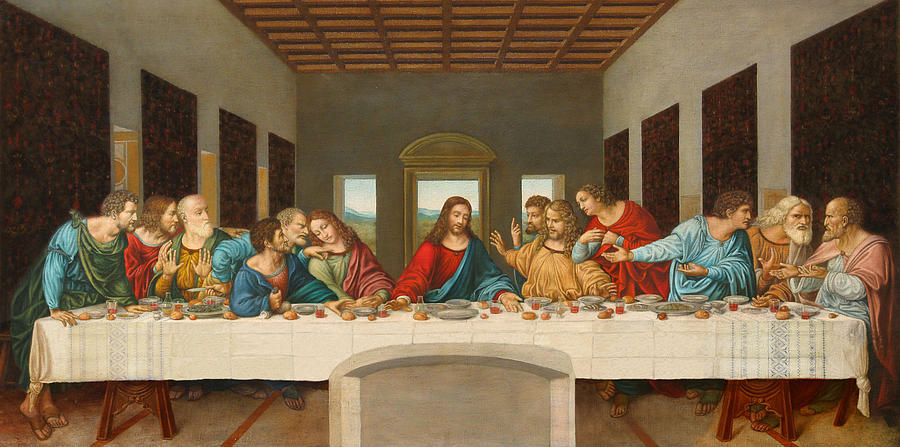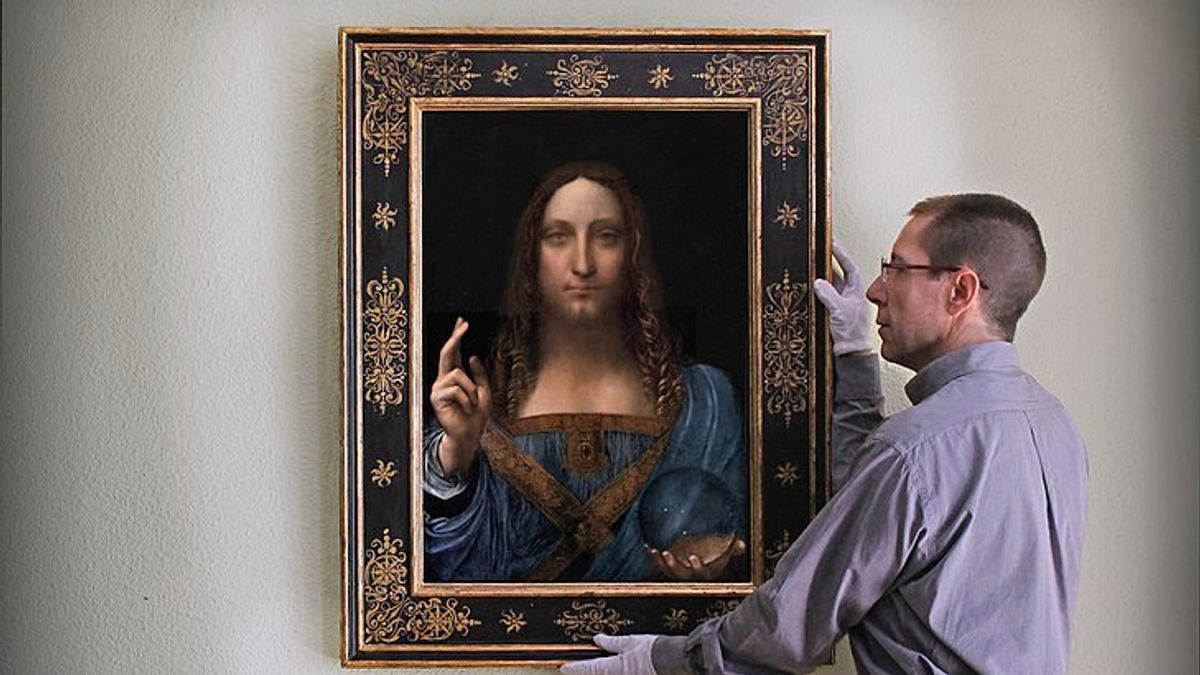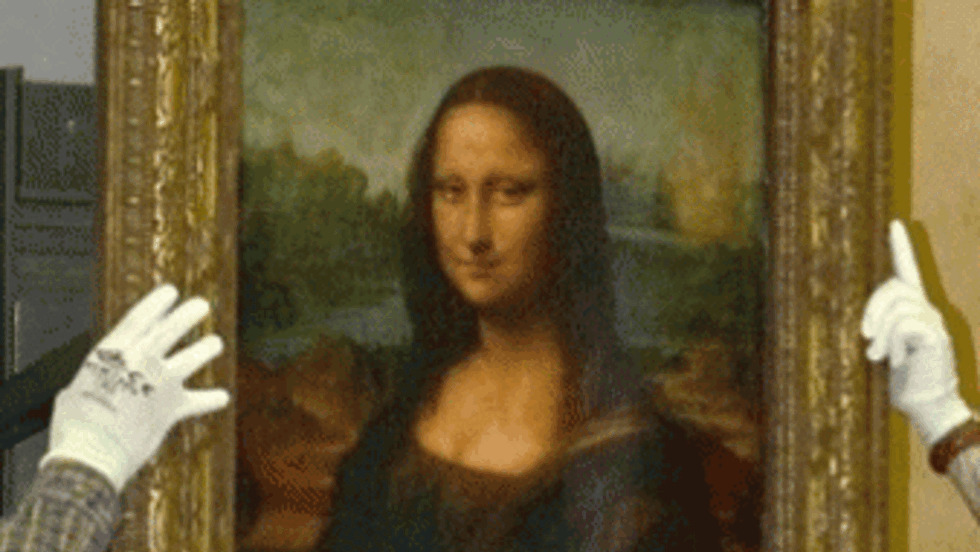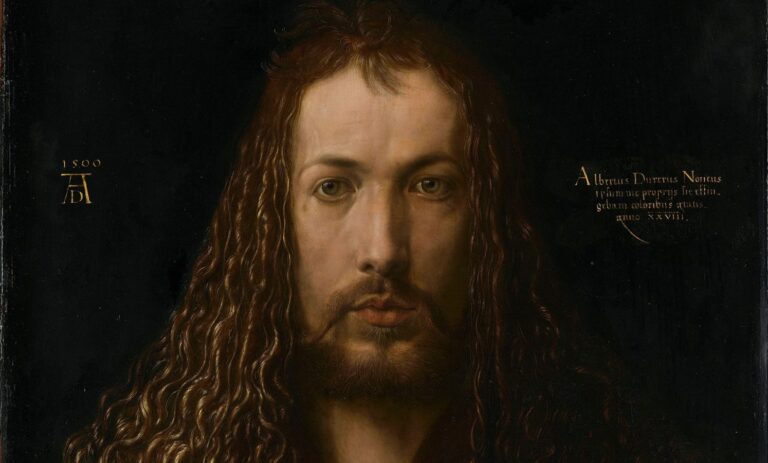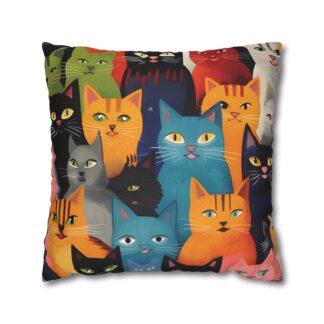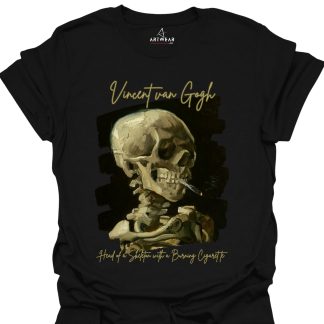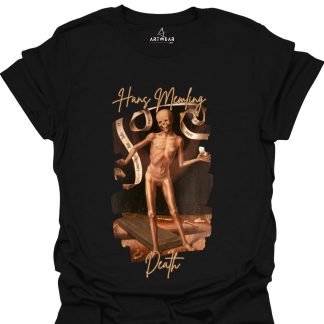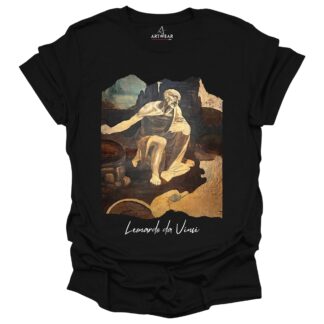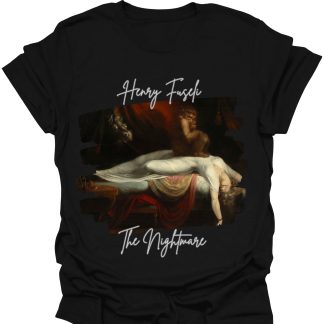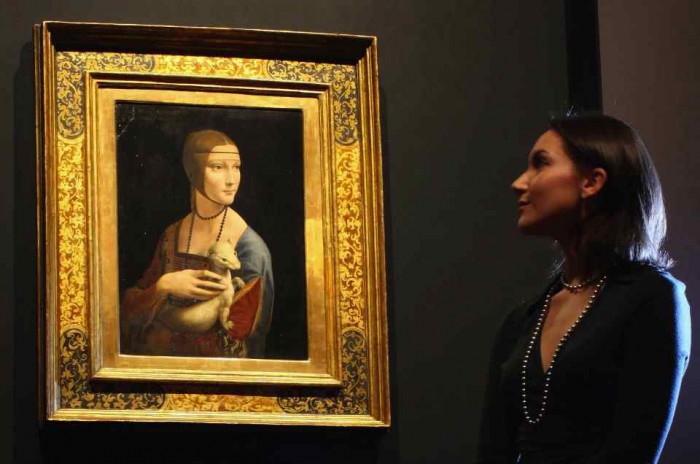
Leonardo da Vinci’s Lady with an Ermine is a quiet thunderclap—movement caught mid-thought, intimacy held without a single word. Painted around 1489–1491 in Milan, it is one of the rare moments where Renaissance portraiture feels less like a record and more like an encounter.
What you’re looking at
- Title: Lady with an Ermine
- Artist: Leonardo da Vinci
- Date: c. 1489–1491
- Medium: Oil on walnut panel
- Size: Approximately 54 × 39 cm
- Current location: Princes Czartoryski Museum, National Museum in Kraków, Poland
The sitter and the court that made her possible
The woman is Cecilia Gallerani, celebrated for her poetry, music, and intellect. She was the young mistress of Ludovico Sforza (“Il Moro”), the de facto ruler of Milan and Leonardo’s patron. Cecilia’s gaze is turned to the right—alert, answering someone we’ll never see. It’s not a pose; it’s a reply. Leonardo gives her not just presence but context: the Milanese court’s brightness, its codes, its performances. She was about sixteen; the portrait is mature because she was.
The ermine and its double meanings
The ermine is more than an accessory.
- Purity and restraint: Medieval lore claimed an ermine would rather die than soil its white coat—an emblem of virtue and self-command.
- A heraldic nod: The ermine was associated with Ludovico Sforza—a political signature hidden in plain sight.
- A linguistic wink: Many scholars note a play on Cecilia’s surname—Gallerani—echoing the Greek word for weasel/ermine (galé), a courtly pun Leonardo would have enjoyed.
The animal and the woman mirror each other’s turn, doubling the portrait’s sense of interrupted motion.
Composition: a body that thinks
Leonardo breaks the static mold of profile portraiture. Cecilia is captured in a graceful torsion—shoulders angled one way, head another, mind elsewhere. Her right hand, alert and tensile, cups the ermine with a tenderness that isn’t soft. Light skims across skin and fur, letting shadow do the more intimate work. You can almost hear the pause between breath and speech.
- Chiaroscuro and early sfumato: Edges soften where feeling begins; contours dissolve into atmosphere rather than ending with a line.
- Psychological modeling: The “subject” here is attention itself—Cecilia’s and ours—caught as it shifts.
Dress, gesture, and the Milanese signature
The narrow black ribbon at her brow, the smooth coazzone hairstyle, the restrained geometry of the gown: these aren’t generic Renaissance cues but Milanese fashion circa 1490. The portrait’s elegance is in the edit—few ornaments, one charged symbol, no stagey background. The luxury is all in the handling of light.
Alterations and what time has done
The painting hasn’t reached us untouched.
- Background: The current deep black is a later overpaint, likely 19th century, replacing a subtler field that once gave the figure more air.
- Inscriptions: Additions such as “LA BELLE FERONIERE” misidentify the sitter and reflect later confusion with a different Leonardo portrait.
- Under-drawing and revisions: Technical studies have shown pentimenti—Leonardo reworked the pose and the ermine, evidence of a mind thinking with the brush.
These changes layer the work with history without dimming its voice.
Provenance and survival
The portrait likely originated in Ludovico Sforza’s Milan. By the early 19th century it entered the Czartoryski collection, a cornerstone of Polish cultural heritage. It was seized during World War II and later recovered, a trajectory that adds a frail kind of triumph to its survival. Today it lives in Kraków, where people still lean in as if not to startle it.
Why it still disarms us
Because it feels private. Not staged, not heroic—simply alive. Leonardo doesn’t paint a type; he paints a moment of attention moving across a person’s face. The ermine isn’t a pet, it’s a key—unlocking identity through symbol, politics, wordplay, and touch. We meet Cecilia as someone we could interrupt and who might, if we’re lucky, turn back to us.
What do you notice first—the hand, the animal, or the thought passing through her eyes? Your answer is the painting working on you.
Fast facts
- One of Leonardo’s few female portraits, alongside Ginevra de’ Benci, La Belle Ferronnière, and the Mona Lisa.
- Innovative movement in portraiture: the three-quarter turn with an answering gaze was radical in its day.
- Symbol as biography: the ermine condenses virtue, patronage, and wordplay into one living emblem.
- An early masterwork in oil: Leonardo uses oil’s softness to model thought, not just flesh.
If you want to go deeper
- Look closely at the right hand: its anatomy, pressure, and restraint tell you how Cecilia holds herself in public.
- Trace the light across the ermine’s head and back; it’s a study in how attention moves.
- Step back to feel the composition: a triangle of face–hand–animal, a circuit for the eye to loop through.
The portrait’s great trick is empathy disguised as form. It doesn’t just show you Cecilia—it lets you meet her.

